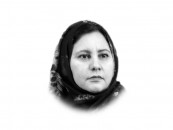Violence against children
I was shocked to know about the horrific incident of violence against a child in Cadet College Larkana

The writer is a child rights activist and development practitioner with a Masters in Human Rights from the London School of Economics (LSE) and tweets at @amahmood72
Corporal punishment is defined as the use of physical force for the purpose of correcting a child’s behavior. It is an act by which adults inflict pain to the child so that he or she is disciplined and the learning process is facilitated. Violence against children in schools or corporal punishment is not new and is commonly used across the country at the government schools, private schools and madrassas. It is also a fact that Section 89 of the Pakistan Penal Code absolves parents and teachers for mild punishment with good intention.
Article 89 of the Penal Code 1860 states “Nothing which is done in good faith for the benefit of a person under twelve years of age, or of unsound mind by or by consent, either express or implied, of the guardian or other person having lawful charge of that person, is an offence by reason of any harm which it may cause, or be intended by the doer to cause or be known by the doer to be likely to cause to that person.” There are similar provisions in article 35 of the Punjab Destitute and Neglected Children Act 2004 and article 48 of the Sindh Children Act 1955. The K-P Child Protection and Welfare Act 2010 prohibits corporal punishment “in all its kinds and manifestations” but it states that this is “as provided under section 89 of the Pakistan Penal Code 1860” (article 33) and allows for “reasonable punishment” by parents (article 44); the definition of corporal punishment (article 2) covers only that which reaches a certain severity.
The civil society of Pakistan is calling for the prohibition of corporal punishment in all settings for years now with no real success. The Sindh Prohibition of Corporal Punishment Bill 2013, the Punjab Prohibition of Corporal Punishment Bill, the Khyber Pakhtunkhwa Prohibition of Corporal Punishment Bill and Prohibition of Corporal Punishment Bill at the federal level are in the pipeline for years now with no attention of the lawmakers and the federal and provincial governments. The bill at the federal level, the Prohibition of Corporal Punishment Bill 2013 was passed by the then National Assembly of Pakistan on its last day in Session on March 12, 2013 however, the bill has lapsed as per Article 76 (3) of the Constitution of Pakistan as it wasn’t passed by the Senate of Pakistan before the dissolution of the National Assembly. In February this year Senator Saleem Mandviwala placed a Prohibition of Corporal Punishment Bill before the Senate of Pakistan and there is no update on this bill as well.
As a positive development however, the Islamabad Capital Territory (ICT) Right to Free and Compulsory Education Act 2012, which is providing for the right to education for children aged 5-16 years, is prohibiting corporal punishment in government schools for children of that age under article 13.
Violence against children or corporal punishment is a socially accepted phenomenon in Pakistan. A study by UNICEF and Save the Children in 2005 identified 28 types of punishment in home and 43 types of punishment in schools. In schools punishments inflicted to children included slapping, ear-twisting, putting the child in awkward position (rooster, aeroplane), beating with iron rod, water-pipe and electric wire. Corporal punishment is common in private schools as well.
Another study in 2009 by Plan Pakistan in selected districts of Punjab identified that 89% of children in rural areas have been subjected to one or more than one punishments and in urban areas 92% children claimed to be punished by teachers. Institution-wise prevalence is 93% for government schools, 86% for private schools, 83% for madrassas and 70% for non-formal schools. Similarly, a study by the Society for the Protection of the Rights of the Child (SPARC) in 2010 in selected districts of K-P found corporal punishment prevailed in 100% schools of the sample. All teachers having in-service and pre-service trainings, still believed in moderate forms of corporal punishment (87%) while 76% parents also believed upon the moderate forms of corporal punishment.
Pakistan is a party to the UN Convention on the Rights of the Child. Under Article 19 of the Convention on the Rights of the Child, a child must be “protected from all forms of physical and mental violence while in the care of parents and others.” Article 28.2 requires that “State Parties shall take all appropriate measures to ensure that school discipline is administered in a manner consistent with the child’s human dignity and in conformity with the present Convention.” Similarly, Article 37 is also pertinent in this respect. “No child shall be subjected to torture or other cruel, inhuman or degrading treatment or punishment.” In its concluding observations and recommendations on Pakistan’s 3rd and 4th Combined Periodic Report the UN Committee on the Rights of the Child recommended to repeal section 89 of the Pakistan Penal Code (1860); Set up effective monitoring system in order to ensure that abuse of power by teachers or other professionals does not take place in schools and other institutions; Introduce public education, awareness raising and social mobilisation campaigns on harmful effects of corporal punishment and promote nonviolent forms of child rearing and education and take proactive measures to eliminate Violence against Children in schools, notably by including in the code of conduct for teachers on the prohibition of corporal punishment.
The UN Committee on the Rights of the Child yet again in its concluding observations and recommendations adopted in June 2016 urged the Government of Pakistan to eradicate and prohibit all forms of corporal punishment. It also recommended to undertake awareness raising campaigns on the harmful effect of corporal punishment with a view to changing the general attitude towards the practice and promote positive, non-violent and participatory forms of child-rearing and discipline. Similarly, Sustainable Development Goal 16.2, end abuse, exploitation, trafficking and all forms of violence and torture against children, also calls upon the governments for the eradication of violence and torture against children.
It is recommended that the government should come up with a comprehensive strategy to deal with the issue of violence against children with immediate action on legal, prevention, protection and capacity building of teachers. The Government of Sindh should ensure that the injured student Ahmad Hussain is provided with all treatment facilities whether in the country or abroad for his full recovery and rehabilitation. Similarly, the Sindh Prohibition of Corporal Punishment Bill and all other prohibition of corporal punishment bills should be enacted immediately.
Published in The Express Tribune, December 20th, 2016.
Like Opinion & Editorial on Facebook, follow @ETOpEd on Twitter to receive all updates on all our daily pieces.















COMMENTS
Comments are moderated and generally will be posted if they are on-topic and not abusive.
For more information, please see our Comments FAQ